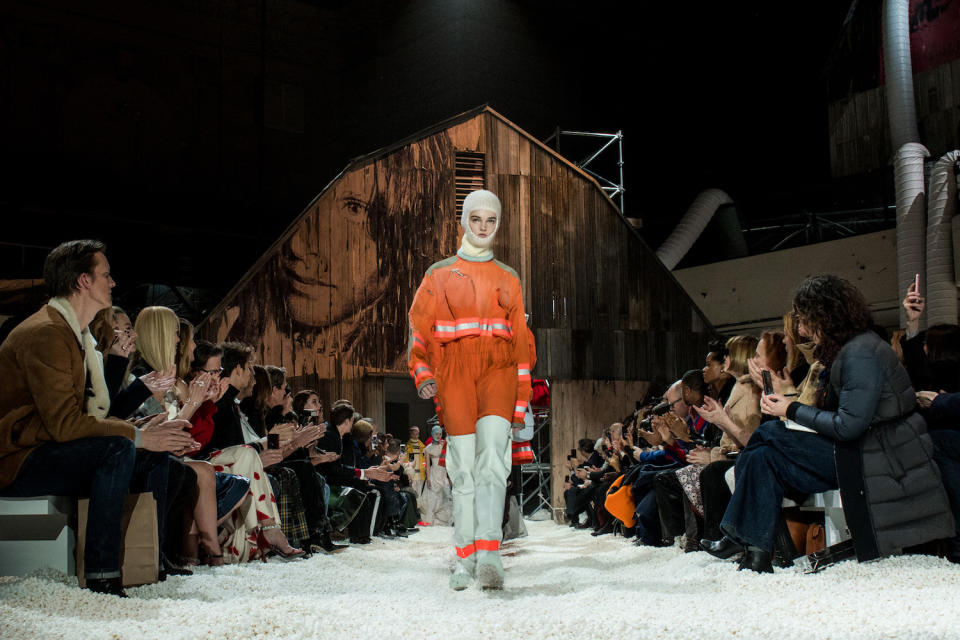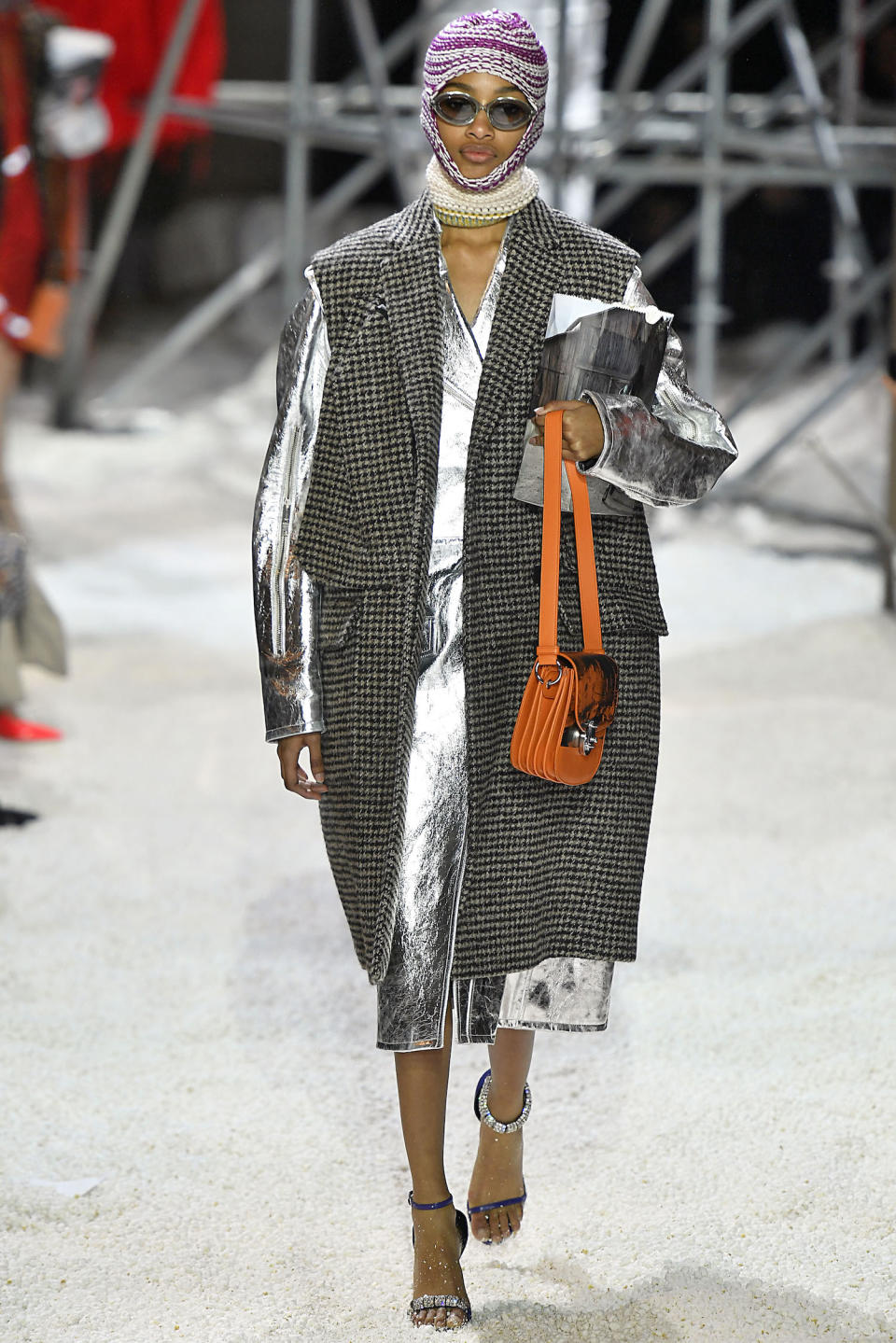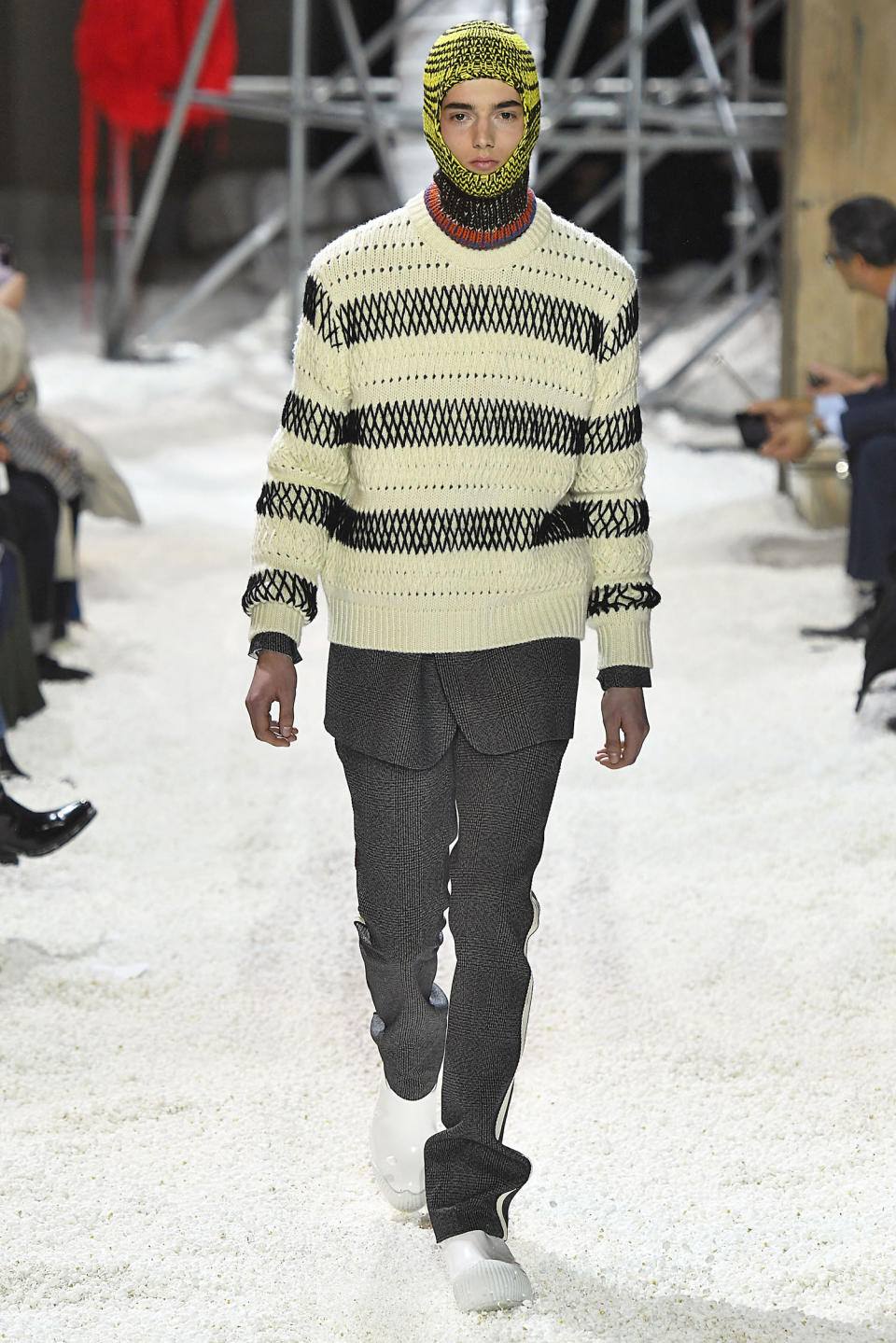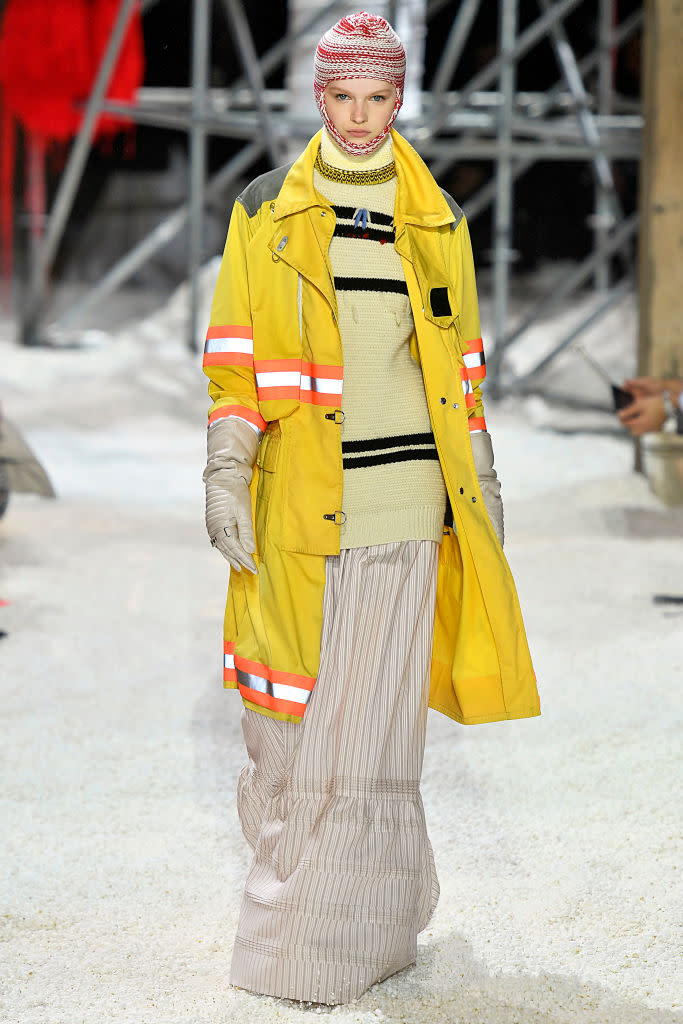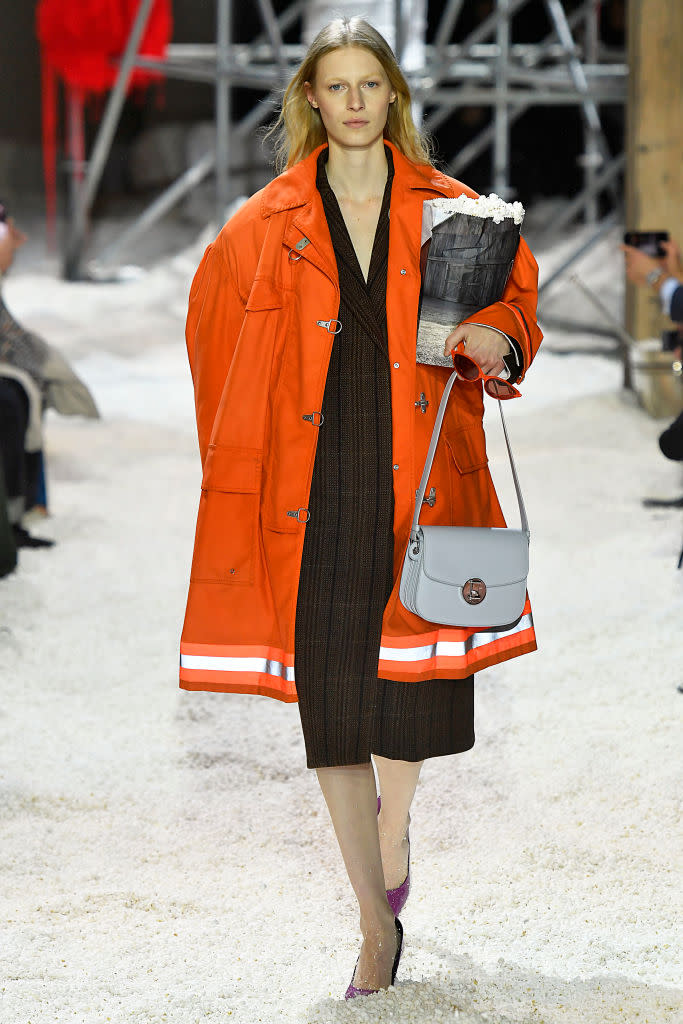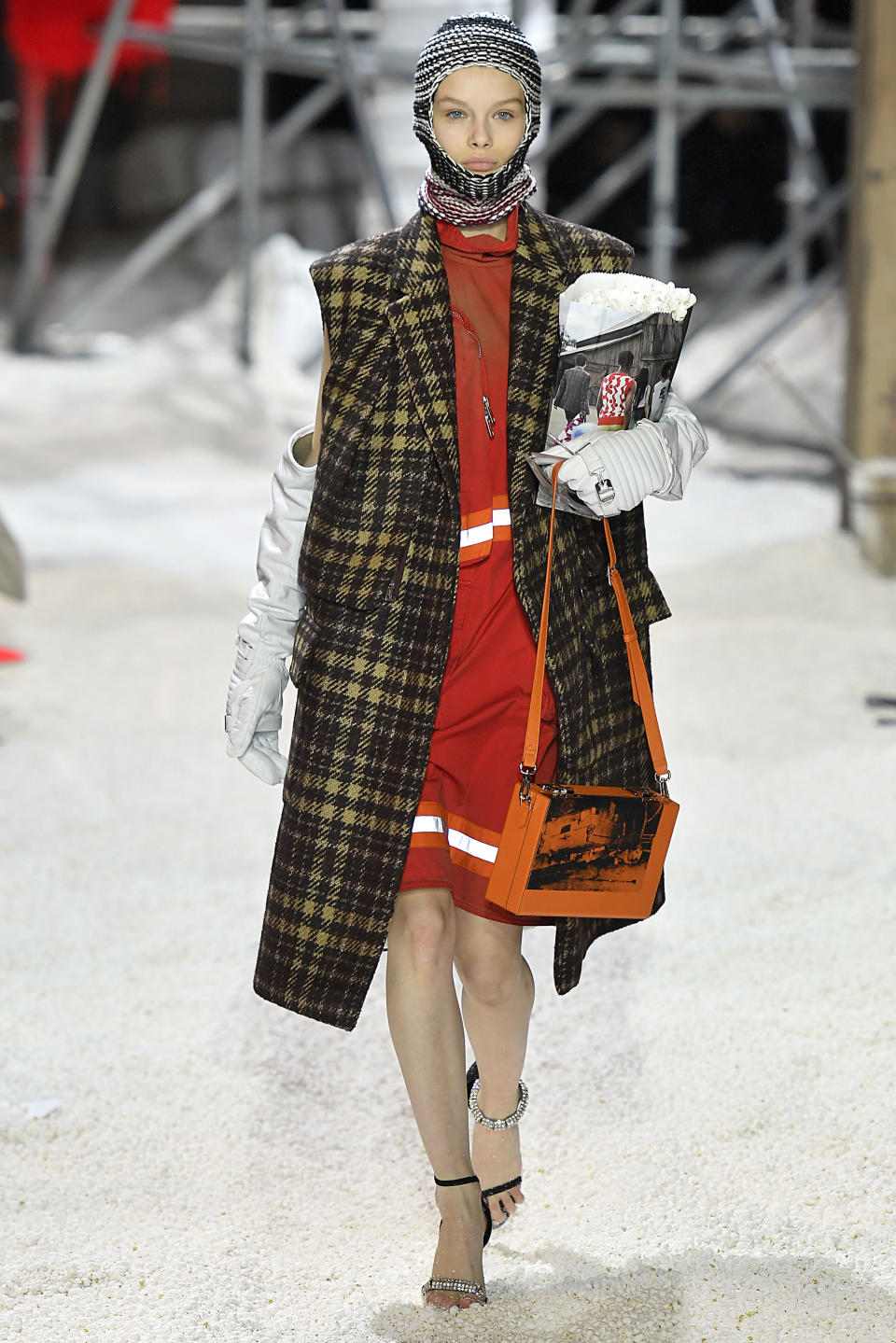Calvin Klein's runway highlights Multiple Chemical Sensitivity disorder. What is it?
A controversial disease known as Multiple Chemical Sensitivity (MCS) has become an unlikely point of inspiration for Raf Simons, the creative mind behind Calvin Klein.
During his Tuesday New York Fashion Week show, Simons referenced the 1995 Todd Haynes film Safe, which stars Julianne Moore as Carol. The main character becomes a victim in her own home and the world around her. She is, in short, allergic to her own life, as she begins to develop mysterious symptoms — mystery bleeding, fatigue, and weight loss — all inexplicable to doctors. As Carol becomes increasingly curious about what is causing her pain, she suspects the environment and starts wearing long sleeves and a balaclava to stay protected.
This week, Simons used Carol’s protective “fashion choice” as one of several inspirations for his runway collection — which similarly includes a series of balaclavas (hand-knit), thick white and metallic gloves, thigh-high boots, and protective clothing similar to a firefighter’s bunker gear. Jackets and coats are made in a bright safety orange, include reflective paneling along the sleeves and trimming. One look, featuring a white, green, and red striped sweater with blue sleeves, white trousers, and orange balaclava, bears a striking resemblance to the film’s own promotional imagery of Carol in her protective outfit.
According to Vogue U.K., “Raf defined his work as being a mix of ‘safety and protection’ with a lot of cinematic historical references. They included Safe, the Julianne Moore film of 1995 about environmental illness in California and a new age clinic in Mexico…” While Raf’s show notes chose to explain his creative references with a collection of 50 words, they included “safe,” “environment,” “industrial,” and “uniform.”
But what is MCS, anyway? The disease rose to prominence during the 1980s and was used to describe chemically intolerant patients — those who are unusually, severely sensitive to common chemicals, solvents, and pollutants that are typically not considered harmful to the general public. Examples include diesel exhaust, smoke, fragrances, cleaning products, and even new carpets and fresh ink.
It differs from traditional allergies in its “symptoms and mechanisms,” according to Ann McCampbell, MD, who suffers from the illness and describes it on the website of the nonprofit Chemical Sensitivity Foundation. She explains how the reactions can be as severe as creating an “imbalance in a person’s nervous, immune, and endocrine (hormonal) systems” and forcing sufferers to pare down their diets to just a few select foods. It is also possible to develop difficulty in speech or cognitive ability. Exposure from cell phones, computers, fluorescent lights, and other wireless devices are believed to affect those with MCS, with the triggers and its reactions varying widely.
The illness was controversial in the 1980s because of the inability of doctors and scientists to pin down a direct line of cause, with many patients simply “cast aside as mentally ill.” The illness was categorized as idiopathic, or a disease/condition that arises spontaneously, without a known cause. Patients’ symptoms varied so tremendously, as did their exposure to certain chemicals, that there was no consistency doctors could use to determine as a causation.
But this changed after a breakout 2012 study by Claudia Miller, a physician and environmental health expert at the University of Texas School of Medicine. Miller was able to determine a cause and effect through a process she calls TILT, a toxicant-induced loss of tolerance. Today, TILT most commonly refers to MCS.
Discover magazine describes Miller’s findings as a two-step process. “First, a susceptible individual gets sick after toxic exposure or exposures. But then, instead of recovering, the neurological and immune systems remain damaged, and the individual fails to get well. The sufferer begins to lose tolerance to a wide range of chemicals common in everyday life…,” it explains. “The person, now sick, becomes highly sensitive to chemical exposures. The individual is like a fireplace after the original fire has died down: The embers still glow a brilliant orange, ready to burst into flame with the slightest assistance.”
It’s also important to note that MCS/TILT is chronic and its effects last as long as the “trigger” or chemical/toxicant is present, but the degree and time exposed can vary person to person, as can its effects.
Haynes originally used MCS in Safe as a metaphor for the AIDS epidemic during the 1980s and the extremes people went to to protect themselves from the then relatively unknown disease.
In Simons’s runway show, although MCS represented a crucial element, the designer had a much larger agenda address — and did it by covering the floors of the American Stock Exchange with faux snow — popcorn — that crunched as the models walked across it. His barnyard set featured reproduced artwork by Andy Warhol, and the ceilings were (once again) accompanied by soft, fibrous sculptures by Sterling Ruby.
It was possibly, as some have conjectured, a dystopian version of America — one that is a continuation from his cinematic horror-themed spring 2018 collection. Is Simons’s collection a commentary on the current state of U.S. as an apocalyptic horror story of its own? Perhaps. Scroll through to judge for yourself.
Read More from Yahoo Lifestyle:
? Alice + Olivia rewrites Bill of Rights to reflect women’s rights at fashion week presentation
? These hairy heels have a surprising connection to ‘Black Panther’ and natural hair
? Real women are front and center in DVF’s new Spring 2018 campaign
Follow us on Instagram, Facebook, and Twitter for nonstop inspiration delivered fresh to your feed, every day.
